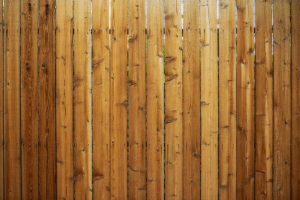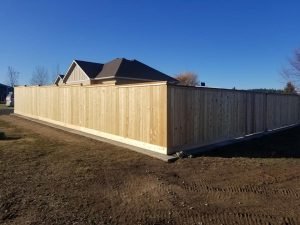Vinyl privacy fences are everywhere around Salt Lake County, Utah County, and Davis County — and for good reason. They’re clean, tidy, and low-maintenance compared with Wood. Still, “low-maintenance” isn’t the same as “no-maintenance.” You know what? A little care goes a long way. With a few simple habits and the right tools, your fence will stay crisp through spring pollen, summer storms, and the freeze-thaw cycles that Utah throws at us. Let me explain how to keep yours looking great — honestly, it’s not rocket science, but a few tips will save you time and money down the road.
Quick truth: Vinyl fences are forgiving — mostly
Vinyl resists rot, termites, and peeling paint. That makes it a relief compared to cedar that needs staining every few years. But vinyl can still get dirty, yellow from pollen, and nicked by lawn equipment. It also reacts to UV and extreme temperature swings, especially here where the sun feels stronger at higher elevation. So yes, it’s low-fuss — yet it benefits from periodic attention. Think of it like a car tune-up: you don’t drive it into the ground and expect the warranty to smile back at you.
Everyday cleaning — simple steps you’ll actually do
Here’s the thing: most of the time you don’t need anything fancy. Regular rinsing, a soft scrub now and then, and keeping vegetation away will handle 80% of the issues.
What you’ll need (nothing crazy)
- Garden hose: Your first line of defense for dust, dirt, and pollen.
- Soft-bristle brush or sponge: Avoid metal brushes — they’ll scratch the surface.
- Mild detergent: Dawn dish soap or Simple Green diluted in water works well.
- Bucket and gloves: Basic safety and cleanliness.
How to do it: mix warm water with a little dish soap, wet a section of fence, scrub gently with the brush, then rinse. Work in panels so you’re not chasing streaks. Quick tip: clean on a cool morning or late afternoon; direct midday sun can cause soap to dry fast and leave residue.
Stains, mold, and stubborn spots — don’t freak out
Sometimes dirt isn’t the problem — it’s mold, mildew, or grease. Let’s be practical: mold happens in shady, damp spots; grease from a BBQ or paint splatters can be annoying; hard-water spots can stain near sprinklers. Each has a preferred treatment.
Targeted fixes
- Mold & mildew: Mix one part household bleach to ten parts water, wear gloves and eye protection, test a small area first, scrub gently, rinse thoroughly. You can also use a vinegar solution if you prefer something milder.
- Grease or oil: Apply a commercial degreaser (Krud Kutter or Simple Green Degreaser), let it sit per instructions, then rinse.
- Hard-water stains: White vinegar applied with a soft cloth often brightens things up; rinse after a few minutes.
Pressure washers? Sure, they’re tempting. But use caution — low pressure only (around 1200–1500 psi), a wider nozzle (25° or 40°), and keep the wand 4–6 feet away. High pressure can etch vinyl and force water into seams. If you’re not confident, call a professional — the fence still looks new, but you don’t want to be the person who power-washed a hole in their panel.
Seasonal care — because Utah has opinions
Different seasons ask for different attention. Let’s walk through the year so you’re not caught off-guard.
Spring
Spring brings pollen and mud from spring runoff. Give the fence a good rinse and spot-clean pollen with a soft brush. Check for any winter damage — small cracks or loose post caps can turn into bigger issues if left alone.
Summer
Summers are hot and sunny. Clean off any dust and check your gates: hinges and latches can sag after heavy use. If you have sprinklers, aim them away from the fence to avoid mineral staining and mildew caused by constant moisture.
Fall & Winter
Snow and ice will accumulate, and road salt from nearby streets can cause discoloration over time. Sweep off heavy snow from panels to avoid excess weight, and hose away salt splashes when temperatures allow. If you see settlement or leaning posts after freeze-thaw cycles, check foundations — sometimes the problem’s in the ground, not the fence.
Repairs and small fixes — when DIY works and when to call us
Small nicks and a loose picket? Easy. Broken posts or major sagging? Not so much. Here’s a quick guide to help you decide.
- Fix it yourself: Replace a single damaged picket, tighten loose screws, or swap a hinge. Most vinyl panels are modular — you remove the bad panel and slide a new one in.
- Call a pro: If multiple posts are loose, the fence leans over a long run, or you suspect footing/soil issues, it’s time for a professional inspection. That kind of problem can get worse quickly, especially with Utah’s freeze-thaw cycles.
Warranties matter. Keep your Installation paperwork and note any maintenance you perform. Manufacturers love when homeowners take care of their products — and it helps if you need a claim.
Need help? Let’s make it easy
If you want someone to handle cleaning, repairs, or a full inspection around Salt Lake County, Utah County, or Davis County, Utah Fencing Company is ready. We do routine maintenance, emergency fixes, and can show up with the right tools and experience. You don’t have to tackle a fence project alone — seriously, why stress?
Call us at 801-905-8153 or Request a Free Quote. We’ll give practical, honest advice and get your fence back to looking great — fast.




